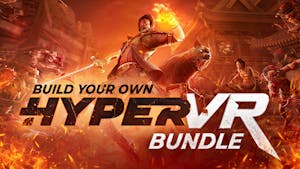At the conclusion of the lesson, a 300-baud modem connected a powerful mainframe, costing tens of millions of dollars at the time, to a teletype under the students' control. The teletype printed long texts on continuous paper rolls, forcing the students to make difficult decisions on how to manage scarce resources to feed the population and plant crops for the next season.
It was the Sumerian Game, the ancestor of all strategy, management, and city simulation games.

The Sumerian Game, which was lost for 60 years, has been rebuilt and is now playable. Manage your grain, store it to withstand harsh seasons and natural disasters, grow your population, and expand your settlements. Find the best balance between people and food, or between arable land and cultivated fields.
You have ten years to expand your city and save it from extinction. If the population drops to zero, the lesson is over.
Call the teacher.

Dear players,
As promised, The Sumerian Game 2.0 is finally here! With this update, youll find so many new features that The Sumerian Game on Steam will feel like an entirely new experience.
There are new game modes (lesser-known, yet still important versions and iterations of the original game), new achievements, fewer bugs, and a more responsive interface that should feel more comfortable than the previous version.
But thats not all!
Among all the new content, youll also discover a completely new game another missing in action title, thought to be lost for years. Its The Sierra Leone Game, a lesser-known and less influential game compared to The Sumerian Game, but nonetheless significant. It is the first game in history to feature a multimedia introduction (with slides and audio), player tooltips, and even a tutorial complete with a final quiz and a chance for promotion. Until now, almost nothing was known about this game but it has now been restored and brought back to life.

We hope that all the effort weve put into creating this version has been worthwhile, and that the opportunity to explore and compare all these different versions of The Sumerian Game, while witnessing the evolution of its original concept into something more modern, will both entertain you and spark your interest.
As always, if youd like to support this project which is Free to Play we invite you to purchase the Supporter Pack and share the game with friends and others who might enjoy it. Your support helps us continue this work of research and restoration. If you like to read the book, you can get it from my official site www.andreacontato.com and Amazon and get also The Sumerian Game in big box limited edition, for C64, Apple II and PC.

Thank you so much, and enjoy the game!
Changelog:
There are now 10 game modes, compared to 5 in the previous version. The selection menu allows players to immediately view the relationship between the various versions and then personally experience the differences and the evolution of the original concept through its numerous iterations. Here are the details:
[u]Sum9rx:[/u] already present in The Sumerian Game 1.0, this is a reconstruction of the version created in parallel by IBM at the Mohansic Laboratory (now the Thomas J. Watson Research Center in Yorktown Heights). It is a simplified and rudimentary version of the gameplay that later became famous thanks to Hamurabi. The reconstruction was possible through some fragments of game output listings and Richard Wings notes. It is only 50% faithful, as assumptions had to be made about mechanics not described by Wing. Available only to those who purchase the Supporter Pack.
[u]Suilxr:[/u] already present in The Sumerian Game 1.0, this is the reconstruction of the most well-known version of the game, created by Mabel Addis at BOCES in Yorktown Heights in 1965 and improved over the following two years. It is 95% faithful, as nearly all necessary information was recovered from archives, output listings, and Wing's notes. Available to everyone in the Free to Play version.
[u]Suilxr advanced:[/u] already present in The Sumerian Game 1.0, this is the complete version of Suilxr with player questions and slides. It is only 75% faithful to the original version because some texts (the questions) and the slide mechanic have been lost. The reconstruction is based on assumptions about how and when the slides would be loaded from the projector, and on questions recreated in the style of the only two surviving examples. Available only with the purchase of the Supporter Pack.
[u]King of Sumeria '68:[/u] This is the first major new feature of The Sumerian Game 2.0, based on FOCAL source code found by researcher Kate Willaert. It is the oldest version of the game by Douglas Dyment (later known as Hamurabi in subsequent versions). This lesser-known version has more text and the famous phrase "I beg to report," directly taken from Addiss Sumerian Game. It wasnt yet a real game, as it had no end and couldn't be lost. The simulation continued until the player decided to close the program. Interestingly, it had a procedure for loading custom initial parameters, a feature later abandoned or evolved in subsequent versions as a "load game" function. Available to everyone in F2P.
[u]Hamurabi (Becker):[/u] Not present in Sumerian Game 1.0. This is a transitional version created in early 1969 between King of Sumeria '68 (the early version) and Hamurabi in BASIC. The random generation system on PDP-8 and Focal-68 didnt work well, always returning the same value sequences. A student from Lexington High School, the same school as Jim Storer of Lunar Lander, modified the FOCAL code of King of Sumeria '68 to make it more "playable." Thanks to his work, other students could play it, including Storer himself, who later wrote Lunar Lander and The Pollution Game, inspired by Hamurabi. Available to everyone in F2P.
[u]King of Sumeria '70 (DEC):[/u] This version was present in Sumerian Game 1.0. It is the most well-known version of Dyments game, stripped down to its core, with most of the text removed but with the possibility of "losing" the game. Available to everyone in F2P.
[u]The Pollution Game:[/u] Another new feature not present in Sumerian Game 1.0. This is Storers game inspired by Hamurabi. It's a key development because all subsequent versions of Hamurabi, despite returning to the classic setting The Pollution Game is set on a dystopian communist island where the player, as a dictator, must manage the economy, plantations, coups, mining companies, and pollution internalized the mechanics invented by Storer. Moreover, the student, unknowingly, created a game with a strong narrative component, like Mabel Addiss original. Available to everyone in F2P.
[u]Sumer (French):[/u] A new addition to Sumerian Game 2.0, available to all. Its one of the many parallel versions of Hamurabi (FOCAL), but the oldest developed in Europe. Interestingly, it uses archaic French and curses at the player when mistakes are made.
[u]Hamurabi (BASIC):[/u] already present in Sumerian Game 1.0, this is the version programmed by David Ahl and popularized through 101 BASIC Computer Games. Available to everyone in F2P.

The most important new feature is the inclusion of The Sierra Leone Game, rebuilt from scratch. This is the second of three simulation games created through the joint BOCES and IBM project (the first, of course, being The Sumerian Game, the last was The Free Enterprise Game). Although less influential than The Sumerian Game, as it wasnt ported to other languages nor featured in publications like 101 BASIC Computer Games or DEC newsletters, The Sierra Leone Game is very important because it was the second example of gamification and the first game to include an introduction, tutorial, and a sort of tooltip. In the initial phases, students embarked on a virtual journey (with text printed by the computer, slides, and prerecorded audio) through Sierra Leone, with a detailed explanation of the duties of UN officials and the ability to explore topics by typing keywords. After the introduction, the player took a knowledge test, and if passed, could immediately receive a field promotion. The game then proceeded through three phases, each with increasing difficulty, involving managing an onion plantation, trading rice in general markets, running a diamond sales office, and finally, heading a Ministry of Economic Development. Based on Wing's notes and a small portion of recovered texts, this version includes the introduction, tutorial, keyword system, tests, and the three sections of phase one (onion plantation). This version is only available to Supporter Pack purchasers.
[ 6425 ]
[ 3784 ]
[ 2906 ]





























